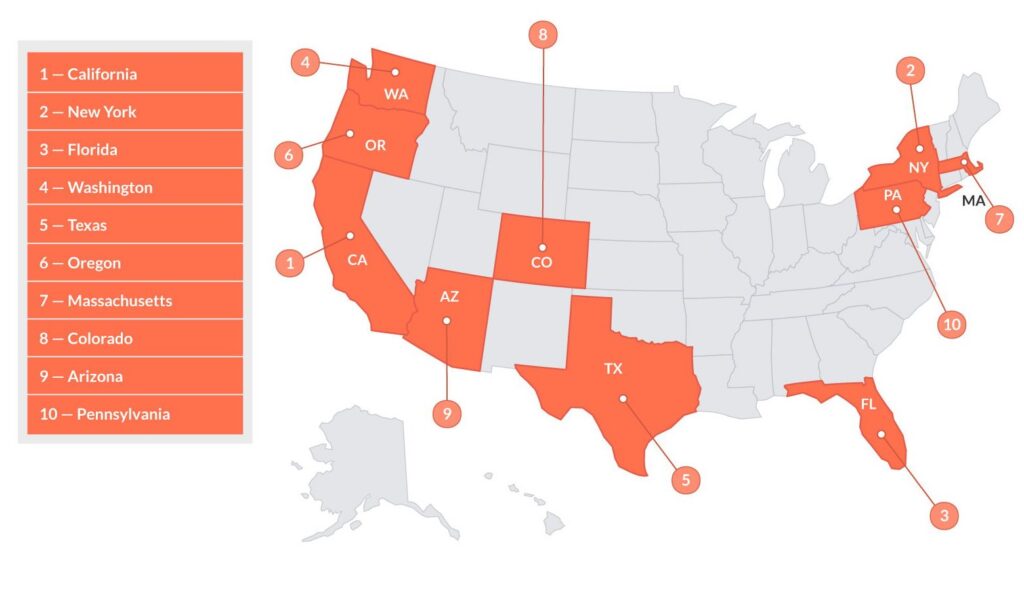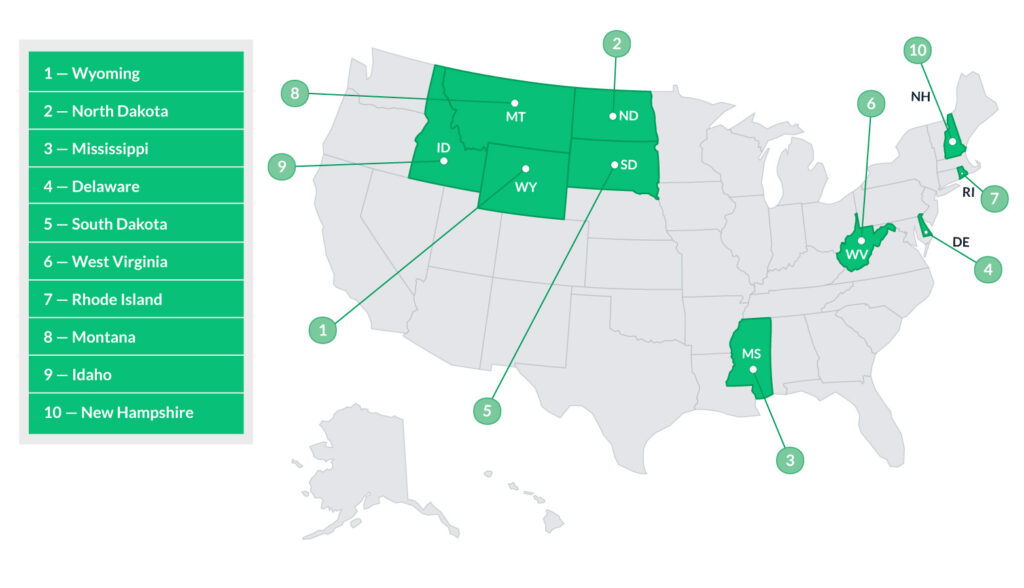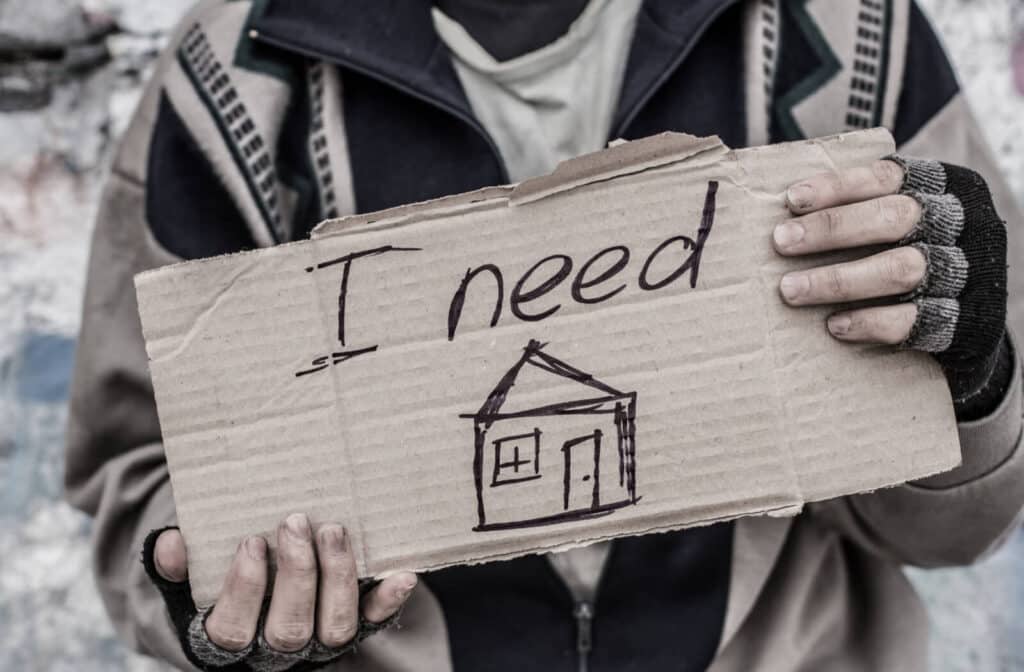Recent data from the U.S. Department of Housing and Urban Development (HUD) revealed that around 650,000 people in all 50 U.S. states and the District of Columbia are homeless—although exact numbers are always subject to change. To put things in perspective, the number is roughly equivalent to the entire population of the Boston metro.
But where are these homeless individuals living? LendingTree examined HUD homelessness Point-in-Time (PIT) data to determine which states had the highest and lowest rates of homelessness in order to respond to this query.
Key Findings:
- According to the latest HUD figures, 649,535 people across the nation’s 50 states and the District of Columbia are homeless. That number is up 12.42% from 2022 and 15.54% from 2019. It’s imperative to highlight the difficulty of definitively counting the number of homeless people in the U.S. The number of people experiencing homelessness is volatile and likely considerably higher than what these figures indicate.
- States with more expensive housing tend to have proportionally higher homeless populations. While expensive housing can exacerbate homelessness, more complex factors-including substance abuse or health problems-can be key drivers behind why people become or remain homeless.
- California, New York, and Florida have the largest homeless populations. Across the three heavily populated states, more than 315,000 people are homeless-nearly half of the identified homeless population in the U.S.
- Wyoming, North Dakota, and Mississippi have the smallest homeless populations. At 532, 784, and 982, these are the only three states where the count of people experiencing homelessness is below 1,000.
- Relative to an area’s population, homelessness is most prevalent in the District of Columbia, New York, and Vermont. Across the three areas, an average of 0.59% of the population is homeless. These are the only places in LendingTree’s study where the share of the overall population that is homeless is above 0.50%. While 0.59% may not appear particularly large, more than 111,000 people in these areas are unhoused.
- An average of 70.64% of the homeless people counted across the nation’s 50 states and the District of Columbia were in some type of homeless shelter or transitory housing when counted. The share of sheltered homeless people is highest in Vermont at 95.84% and lowest in California at 31.96%.
LendingTree research found that homelessness occurs in every state and is frequently more common in regions where home prices are higher.
Top 10 States With the Most Homelessness:
- California
- New York
- Florida
- Washington
- Texas
- Oregon
- Massachusetts
- Colorado
- Arizona
- Pennsylvania

No. 1: California
- Number of homeless people: 181,399
- Share of homeless people in shelters: 31.96%
- Share of homeless people as a percentage of the population: 0.47%
- Median home value: $715,900
No. 2: New York
- Number of homeless people: 103,200
- Share of homeless people in shelters: 95.15%
- Share of homeless people as a percentage of the population: 0.53%
- Median home value: $400,400
No. 3: Florida
- Number of homeless people: 30,756
- Share of homeless people in shelters: 49.66%
- Share of homeless people as a percentage of the population: 0.14%
- Median home value: $354,100
Finding more reasonably priced housing in their neighborhood would probably help some Americans who are homeless, but many homeless persons have other difficulties like substance misuse or physical or mental disease. It could be possible to keep individuals who battle with these issues off the streets by simply housing them in vacant houses, but this would not address the underlying causes of their homelessness.
Top 10 States With the Least Homelessness:
- Wyoming
- North Dakota
- Mississippi
- Delaware
- South Dakota
- West Virginia
- Rhode Island
- Montana
- Idaho
- New Hampshire

No. 1: Wyoming
- Number of homeless people: 532
- Share of homeless people in shelters: 89.10%
- Share of homeless people as a percentage of the population: 0.09%
- Median home value: $292,300
No. 2: North Dakota
- Number of homeless people: 784
- Share of homeless people in shelters: 77.55%
- Share of homeless people as a percentage of the population: 0.10%
- Median home value: $243,100
No. 3: Mississippi
- Number of homeless people: 982
- Share of homeless people in shelters: 54.79%
- Share of homeless people as a percentage of the population: 0.03%
- Median home value: $162,500
Complex Causes of Homelessness… and Solutions?
At first glance, it could be easy to attribute homelessness only to obvious factors such a shortage of reasonably priced homes. However, the issue is actually far more complicated.
For instance, LendingTree research demonstrates that the share of the population experiencing homelessness is typically higher in states with higher property values. In light of this, some would conclude that all that’s required to eradicate homelessness is a reduction in property prices. Similar to this, one might think that placing individuals without a place to live in some of the millions of unoccupied housing units across the country is another “simple” approach to keep people off the streets and out of shelters.
These solutions, however, fail to take into account the fact that unoccupied homes usually aren’t abandoned for very long or aren’t otherwise suitable for the homeless community. They also fail to acknowledge the nuanced dynamics at play in the American homelessness crisis.
Finding housing for the homeless is just one of many priorities, but it’s also necessary to address the non-financial causes of homelessness.
Creating more affordable housing and redistributing some unoccupied homes to those in need are crucial strategies in the fight against poverty. However, it is unlikely that the issue of homelessness will ever be remedied if the social aspects of it are ignored.
To read the full report, including more data, charts, and methodology, click here.









